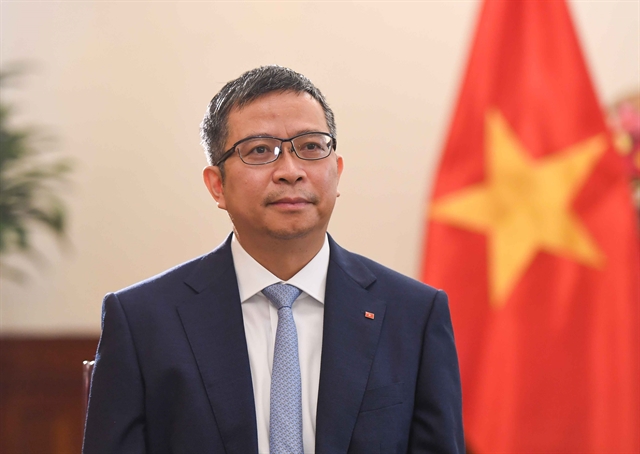Chinese Top Leader’s State Visit to Vietnam Holds Profound Symbolic Significance, Says Ambassador

Beijing, The Gulf Observer: The upcoming state visit to Vietnam by General Secretary of the Communist Party of China (CPC) Central Committee and President of China Xi Jinping on April 14–15 holds profound symbolic and strategic significance for the Vietnam–China relationship, according to Vietnamese Ambassador to China Phạm Thanh Bình.
This will be President Xi’s first overseas visit in 2025, his fourth visit to Vietnam as China’s top leader, and the second within his current term — reflecting the high importance the Chinese Party and State attach to strengthening friendly neighborly relations and comprehensive cooperation with Vietnam.
Strengthening Strategic Partnership at a Pivotal Time
Ambassador Bình noted that the visit comes at a pivotal time as both nations are actively commemorating the 75th anniversary of diplomatic relations and celebrating the Vietnam–China Year of Humanistic Exchanges. With bilateral ties maintaining positive momentum across multiple fields, the visit is seen as an opportunity for top leaders of both Parties and States to conduct in-depth strategic discussions, review the outcomes of high-level agreements, and identify key directions to further advance relations in a stable, substantive, and effective manner.
Vietnam places great importance on the visit and will extend a special and warm welcome to President Xi, in keeping with the longstanding tradition of friendship and mutual respect between the two sides, Bình affirmed.
High-Level Engagements and Major Agendas
During the two-day visit, President Xi is expected to meet and hold talks with:
- General Secretary of the Communist Party of Việt Nam Central Committee Tô Lâm
- State President Lương Cường
- Prime Minister Phạm Minh Chính
- National Assembly Chairman Trần Thanh Mẫn
The discussions will center on strengthening political trust, expanding high-level exchanges, and enhancing the quality and effectiveness of bilateral cooperation, including through the implementation of the “six major orientations” for future collaboration.
Bình expressed confidence that Xi’s visit will mark a historic milestone, laying the groundwork for breakthrough achievements and ensuring that Việt Nam–China relations continue on a stable and mutually beneficial trajectory.
Deepening Economic, Trade, and Infrastructure Cooperation
The ambassador highlighted that bilateral trade has witnessed strong growth, with Việt Nam being China’s largest trading partner within ASEAN and its fourth-largest globally in 2024. China remains Việt Nam’s largest trading partner, top import market, and second-largest export market.
Efforts are underway to enhance infrastructure connectivity, particularly in railway projects such as:
- Lào Cai–Hà Nội–Hải Phòng
- Đồng Đăng–Hà Nội
- Móng Cái–Hạ Long–Hải Phòng
These standard gauge railway lines are considered strategic transport links that will facilitate trade, tourism, and people-to-people exchanges. They are expected to reduce transit time, optimise logistics, and increase the competitiveness of intermodal transport — particularly for key Vietnamese exports like agricultural and aquatic products.
Moreover, these routes will link Vietnam to China’s broader rail network, extending access to Central Asia, Eastern Europe, Russia, and the Middle East, while enabling China to better reach ASEAN markets through regional agreements like the RCEP and ACFTA.
Expanding Cultural and People-to-People Exchanges
Ambassador Bình emphasized the growing cultural and people-to-people ties between the two nations. With over 23,000 Vietnamese students in China and nearly 3.7 million Chinese tourists visiting Vietnam in 2024, the human connection continues to thrive.
Currently, 400 flights per week operate between the two countries. Both sides are working to increase direct air routes, including Hà Nội–Fuzhou, HCM City–Beijing, and the resumption of Hong Kong–HCM City flights, facilitating greater travel and business connectivity.
As part of the Vietnam–China Year of Humanistic Exchanges, numerous joint activities — including cultural programs, scientific forums, and tourism cooperation — have been rolled out by local authorities and mass organisations, especially in border provinces.
Looking ahead, both countries will strive to organise diverse and creative exchange activities, build stronger social foundations for bilateral relations, and further deepen the bonds between their peoples.


